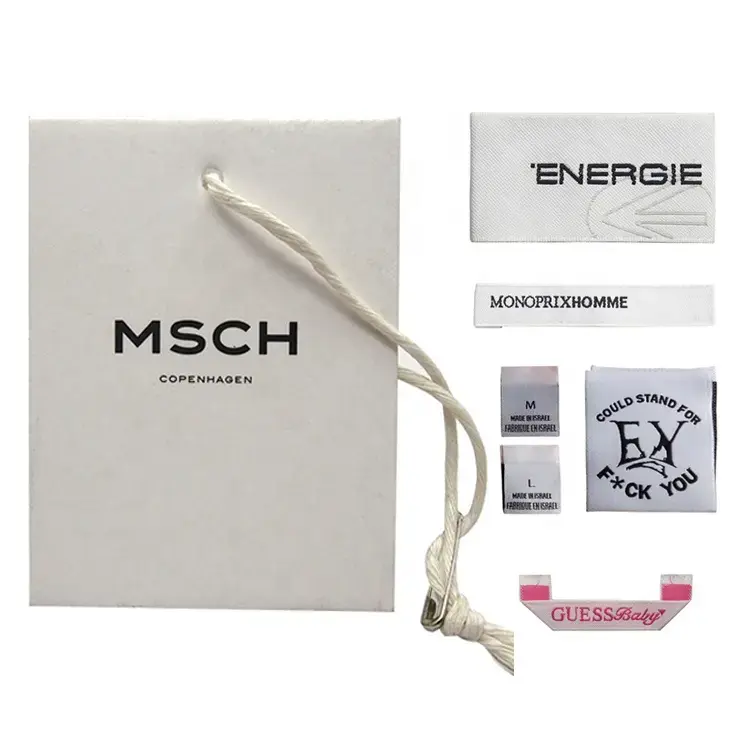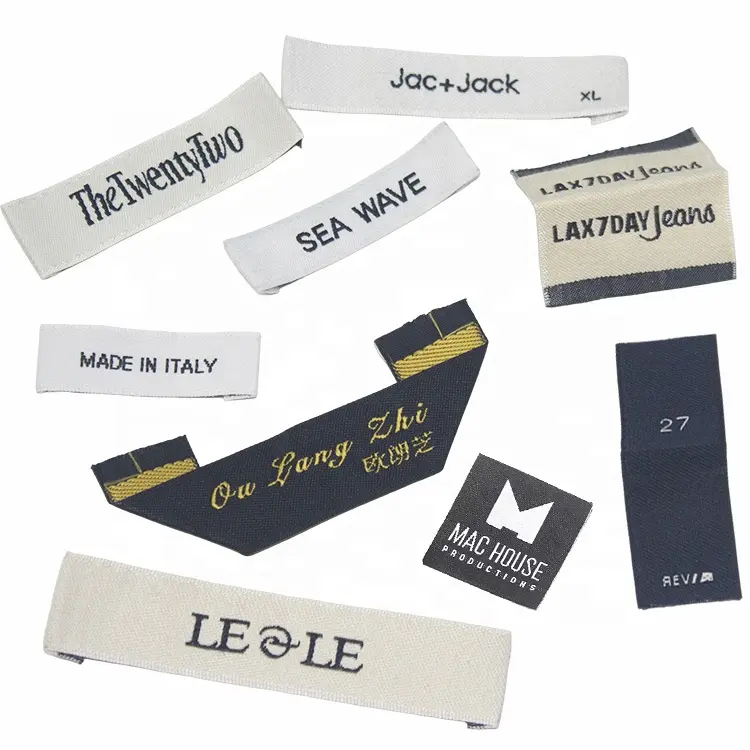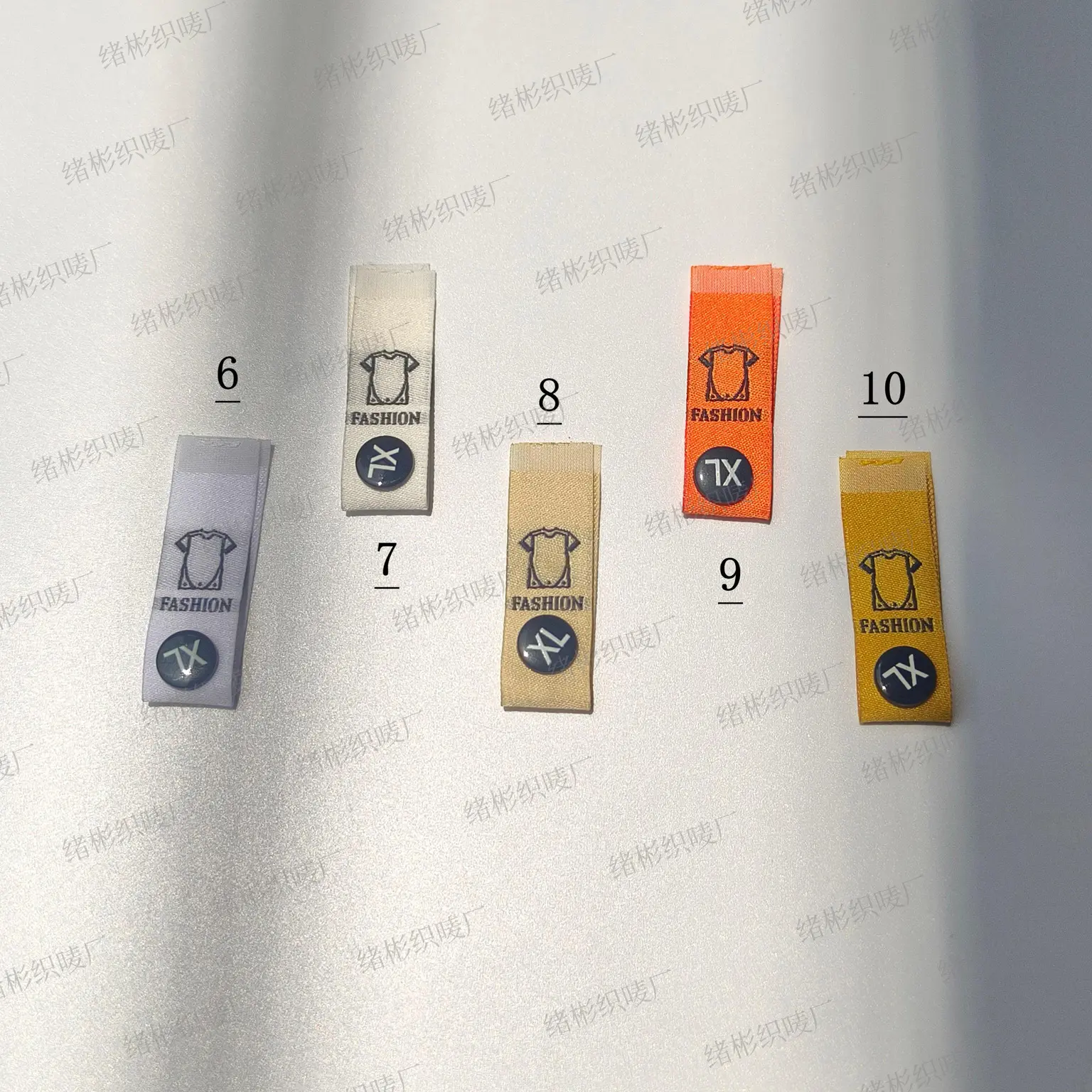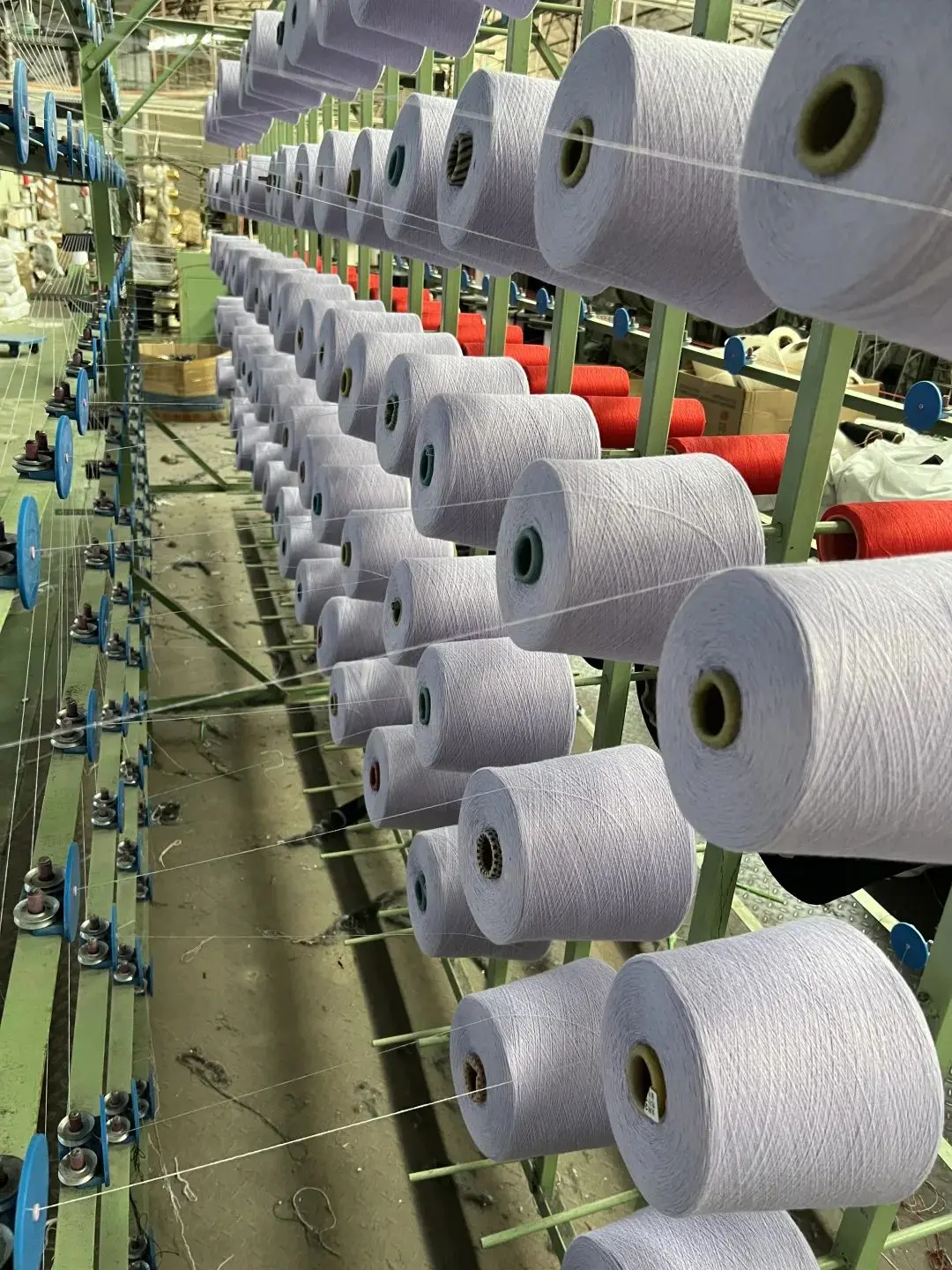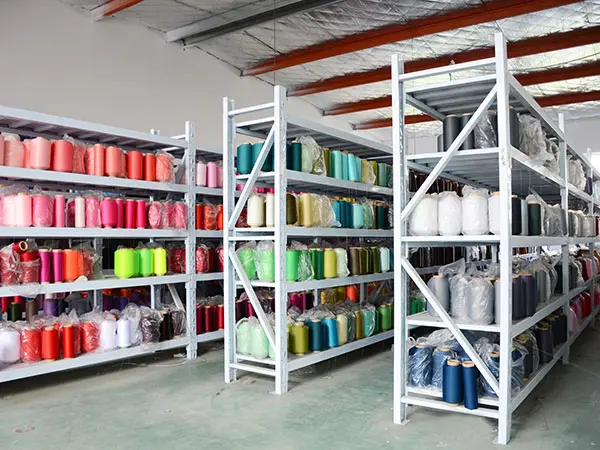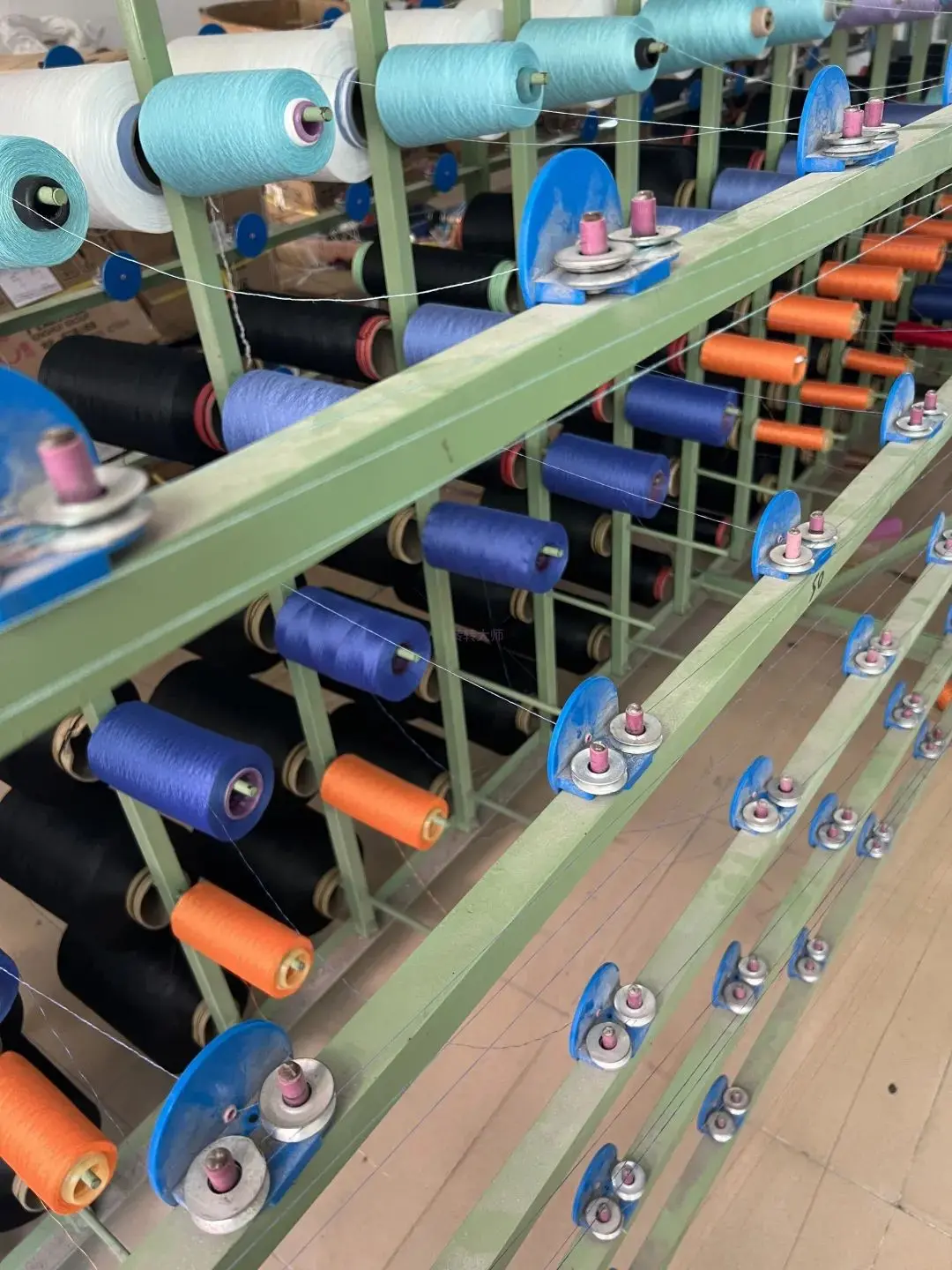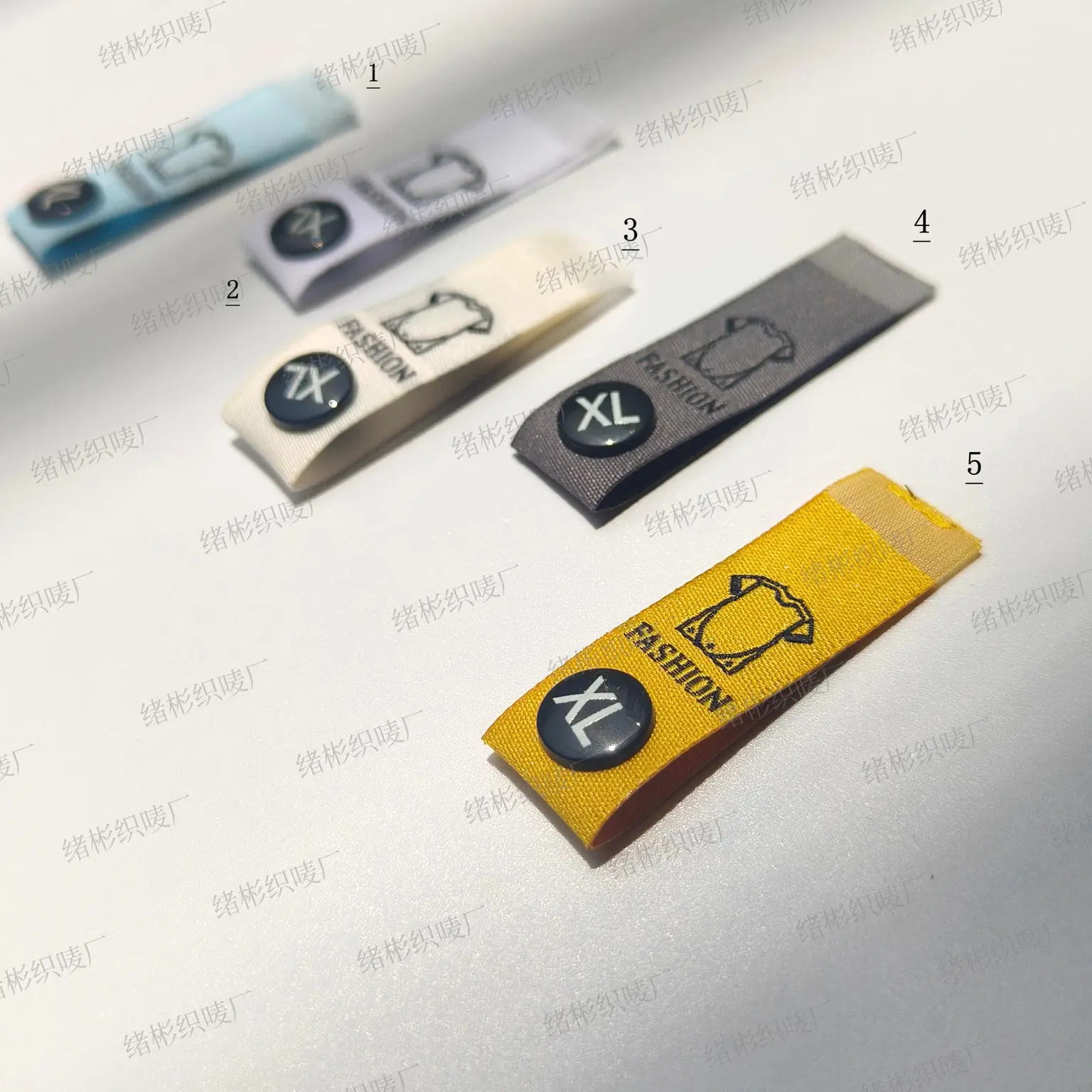Satin Woven Labels vs. Damask: Features and Differences
Satin Woven Labels vs. Damask: Features and Differences
Satin woven labels are strong, smooth-edge labels characterized by bold font lines and sparse logos, often featuring small white holes. These labels are widely used by high-end fashion brands for suits, designer clothing, and more. They offer superior quality and an upscale appearance, making them ideal for custom branding needs.
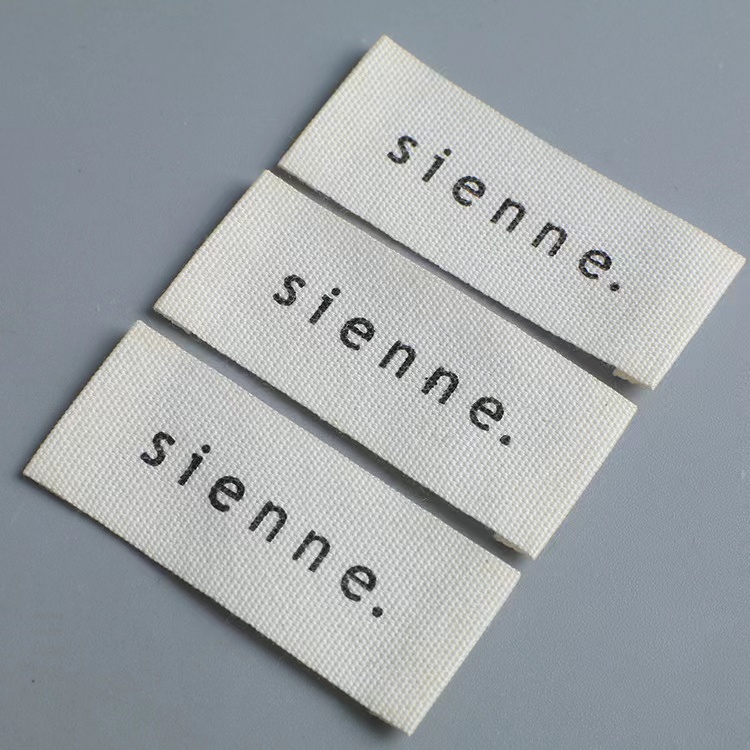
Key Features of Satin Woven Labels
1. Type: Satin / Edge-woven Label
2. Surface: Silky smooth with natural sheen
3. Yarn: Coarser yarn with bold text lines; white holes are common
4. Edges: Neatly stitched with consistent thread throughout
5. Texture: Durable and smooth, slightly firmer than damask labels
6. Color Limitations: Typically up to 4 colors; background color limited to black or white
7. Logo Weaving Options: Metallic threads (gold/silver) available for premium look
8. Size:
Max width: 5 cm
Minimum letter height: 3 mm
9. Eco-Friendliness: Made from environmentally friendly materials
10. Production Notes: Lower yield, longer lead time, but higher quality
Material and Color Specifications
Materials:
a. Cotton yarn (used for warp or weft only; black and white only)
b. Polyester yarn
c. Metallic yarn (gold/silver)
Color Matching:
a. Colors selected based on Pantone or yarn color charts
b. Up to 4 colors allowed
c. Damask labels can support up to 12 colors
Optional Finishes and Shapes
a. Folding Options: Manhattan fold, center fold, mitre fold, end fold, laser cut, die cut, etc.
b. Common Shapes: Round, rectangle, square, heart, etc.
c. Usage Types: Care labels, size tags, main labels, neck labels, hem labels, etc.
d. Minimum Order Quantity (MOQ): 1,000 pcs (larger quantity = lower unit price)
Types of Satin Woven Labels
1. Satin Main Label
a. Use: Brand promotion; placed at various locations (e.g., back neck, hem, sleeve)
b. Features: Simple woven brand logo or company name; high recognition; aids brand visibility
2. Satin Care Label
a. Content: Washing symbols, care instructions, etc.
b. Placement: Usually sewn into inner hem seam
c. Optional Info: Brand name, size, country of origin, etc.
3. Satin Size Label
a. Common Sizes: XS, S, M, L, XL, XXL
b. Best For: Shirts, jackets, hoodies, suits, etc.
c. Premium Option: Can be upgraded with metallic yarn for a more upscale look
Satin vs. Damask Woven Labels: A Comparison
1. Base Material
a. Satin: Made with silky satin fabric; luxurious texture
b. Damask: Can use various fabrics (including satin); softer feel
2. Logo & Pattern Density
a. Satin: Sparse logos with bold font lines
b. Damask: Densely woven logos with rich detail
3. Color Capacity
a. Satin: Max 4 colors
b. Damask: Up to 12 colors, ideal for complex designs
4. Yarn Thickness
a. Satin: Thicker yarn; larger fonts
b. Damask: Finer yarn; enables detailed graphics and text
5. Cost
a. Satin: Higher quality, more expensive
b. Damask: Cost-effective due to efficient production
6. Production Efficiency
a. Satin: Intricate process, longer lead time; best for premium customization
b. Damask: Efficient mass production via computerized looms
7. Brand Positioning
a. Satin: Ideal for high-end fashion like suits and luxury apparel
b. Damask: Suitable for mainstream fashion brands
8. Label Width
a. Satin: Up to 5 cm wide
b. Damask: No specific width limit; up to 110 cm possible
9. Minimum Logo Size
a. Satin: Minimum letter height is 3 mm
b. Damask: As small as 2 mm; better detail rendering
More:custom buttons for clothing | waterproof hang tags | custom pvc labels























